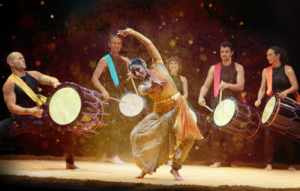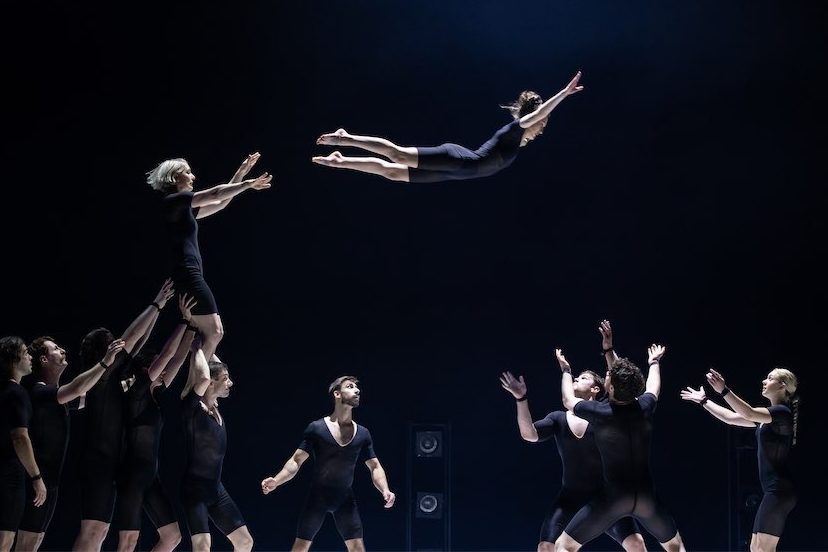DIRECTOR of the performance company Lingalayam, Anandavalli, is one of the genuine stayers on the Australian dance scene.

Operating from Homebush NSW, where she runs a successful academy of classical Indian dance focusing on Bharata Natyam and Kuchipudi styles, since 1996 she has been taking her premiere dancers on tour to prominent venues like the NIDA Theatre to showcase the potential of Indian dance, especially in its female manifestation.
Lingalayam has often been seen in Canberra and in this latest Australian tour we can see the secret of her success – Anandavalli does not stand still.
In a collaboration she initiated in 2001 with Riley Lee, the respected shakuhachi player and co-founder of the Japanese Wadaiko drumming group Taikoz, we saw Carnatic cello, flute, percussion and vocals combine with classical dance.
Uniquely, the forthright masculine principle of drumming (although indeed two members of Taikoz were women) was seen battling with the graceful classical ethos of Indian dance. It is in this sense that Japanese “Chi” joined Indian “Udaka” (water) in perfect combat and eventually, harmony.
Bharata Natyam allows a good deal of joyous athleticism, while Kuchipudi is full of asymmetrical static poses and gracefully down-turned arms showing the female body to perfection. In “Chi Udaka”, moments of shared beauty were all the more powerful because of the contrast with the drumming.
Set against a votive background of large movable shrines dominating the stage, (necessarily moved for more expansive sequences) the production combined live and recorded music that evoked the sounds of nature, especially running water. This led to some technical problems and took away from the superb live performances by Riley, cellist John Napier, vocalist Aruna Parthiban and the drummers.
Anandavalli herself made a rare appearance, both at the beginning of the performance, challenging the percussionists with rhythmical syllabic counting and at the conclusion in a beautiful series of devotional mudras, or gestures.
The program outlines a development from before dawn to midnight, the overall impression was of pure dance rather than something to be followed literally, with abstracts like joy, grace and aggression to the fore. The except to this was the ‘early morning’ appearance of the lovely Apsaras or water-nymphs.
Visually, the stage of the Playhouse was fully occupied with instrument, votive shrines, reed-like hangings, a rounded Tarquett flooring laid out ritually, and, at the end, a starry cyclorama and a drape of multi-coloured fairy lights downstage.
Although the fairy light drew oohs and aaahs from the crowded house, I felt that this lighting was a case of ‘more is less’ – the dancing, the drumming and the musical the performances were quite sufficient without stage smoke and fairy lights.
It was pleasing to see such a solid cross-cultural audience for this innovative performance. Doubtless we can we look forward to further developments from Lingalayam in its pursuit of cross artform engagement.
Who can be trusted?
In a world of spin and confusion, there’s never been a more important time to support independent journalism in Canberra.
If you trust our work online and want to enforce the power of independent voices, I invite you to make a small contribution.
Every dollar of support is invested back into our journalism to help keep citynews.com.au strong and free.
Thank you,
Ian Meikle, editor




Leave a Reply